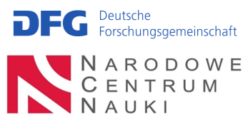The project is concerned with Early Slavic (Palaeoslavic) Studies. We focus on how exactly the Church Slavonic language interacted with the individual vernacular language varieties of the Cyrillic printed books and manuscripts from the 15th to the 17th centuries, the period during which individual non-Church-Slavonic languages based on the vernacular first started to arise. Since there is a complex interaction between handwritten and early printed sources and their respective traditions, we intend to investigate selected early printed books and manuscripts in order to gain a clearer picture about the interaction of traditional Church Slavonic and the respective emerging vernacular varieties. Main hypotheses: 1) paratexts, i.e. fore- and afterwords in manuscripts and early printed books differ systematically from the main texts with respect to linguistic features; 2) South and East Slavic texts show traces of the vernacular to different extent and with respect to different linguistic categories; 3) paratexts in manuscripts and printed books of each region and linguistic variety exhibit systematic differences. We intend to address these hypotheses by using a mixed-methods approach (quantitative and qualitative, digital and analogue, linguistic and philological). By doing so, we intend to not only gain more reliable results with respect to linguistic and textual analysis, but to make a significant contribution to ongoing methodological debates within historical linguistics, philology, and Digital Humanities. These issues have been addressed in a pilot study prepared by the PIs currently under review. Work packages include qualitative as well as quantitative analysis using a large corpus of manuscripts and early printings automatically transcribed using so-called Handwritten Text Recognition (HTR) models and advanced statistical methods from variational linguistics (e.g., mixed-effects regression or random forests). Crucially, the quantitative and qualitative analyses will be accompanied by continuous methodological reflection on the opportunities and limitations of both the quantitative and the qualitative approach and the possibilities of combining them in order to get as reliable results as possible. Our analysis will lead to better understanding of the linguistic and historical processes of the various Slavic-speaking countries, including the identification of the most important periods of development of Slavic languages. Furthermore, we will also formulate specific suggestions for using the results of our research in other, non-linguistic disciplines. Finally, both our database and the methodological advancements brought about our project work will increase the effectiveness of future studies. The composition of the team is motivated by the comprehensive methodological approach, resulting in a significant added value of the international cooperation.
